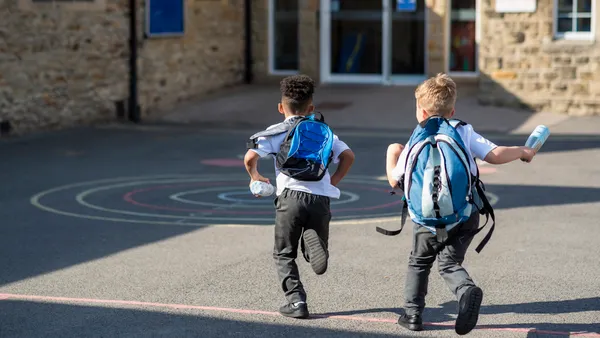Roberta Brandao is the director of the Popkin Innovation Lab at the Solomon Schechter Day School in Bergen County, New Jersey.
Empathy can be a tough concept to teach kids. First there’s the subtle difference between empathy and sympathy, which can be difficult to explain even to adults. Then there’s the elusive dictionary definition — “the ability to understand and share the feelings of another.”
This begs the question: how can someone truly understand how someone else is feeling? Are some people born with this innate ability, or is it a skill that can be learned and sharpened? Personally, I believe that although people may be born with different levels of empathy, it’s also an important skill that can be taught in the classroom. At Solomon Schechter Day School of Bergen County (SSDS), we have developed a curriculum around important real-life skills that students use long after they graduate -- including empathy. Here are some actionable ways educators can teach empathy in the classroom.
Teaching empathy through project-based learning
One way that schools can teach students empathy is engaging students in creative, interdisciplinary technology projects focused on building empathy. For example, at SSDS, our 3rd graders recently collaborated with change management and marketing guru Cynthia Phillips — founder and CEO of The Disruptive Factory, a social change consultancy — as testers and ambassadors for a new animated cartoon series and a transmedia campaign called “Verti.” This year-long project introduces students to fictional characters in the animated cartoon and will ultimately culminate in students building prototypes of a space station they think would benefit the characters, promoting empathy.
Creating empathy maps
Research shows the best way for students to begin to understand empathy is by doing — which is why one of the best things educators can do is to promote active learning. That is why Schechter’s educational team challenged our students to create “Empathy Maps,” in which students were pushed to think about how others would feel in a situation. Students first partnered to create “roses” and “thorns” — positive and negative emotions — such as how characters would feel in the Verti project. Then they placed their roses and thorns onto different sections of a board under the categories of Hear, See, Think and Feel, or See and Do. This enabled them think critically about how others would feel in a situation.
Designing a curriculum that teaches active listening
Another way to promote empathy is through active listening, which is why I created Pocket Empathy, an exercise that teaches 3rd graders the skill of active listening. The exercise entails pairing with a partner and following specific prompts such as eye contact when your partner is speaking, not interrupting and making insightful comments that acknowledge a student has been applying his or her whole self to what the partner is saying.
Integrating design thinking
Teaching kids about empathy starts with demonstrating what it means to maintain a positive mindset that’s reflected in the way they speak. For example, we encourage students to structure sentences in a way that reflects design thinking. This includes sentences that flow as “I like…because ….” and “I wish… because….” In this way, students learn to self-reflect, as well as how to put themselves in other people’s shoes. If they think certain things for certain reasons, they gain an understanding of why their peers may have certain thoughts as well.
There are many ways of teaching empathy; however, whether or not it’s an innate personality trait may not be as important as people may think. Educators should know that in their students’ eyes, they are often superheroes in their own right, capable of far more than teaching arithmetic or grammar. In that vein, empathy can be thought of as a "superpower,” which students as young as 3rd grade can learn and develop through projects such as Verti.
By teaching empathy, we help our students develop this superpower and develop our own as well. A school is a house of knowledge, but it is also a place for students to develop a strong moral character, including empathy. And, as a result, great things happen when curriculum and the opportunity to teach character intersect.











